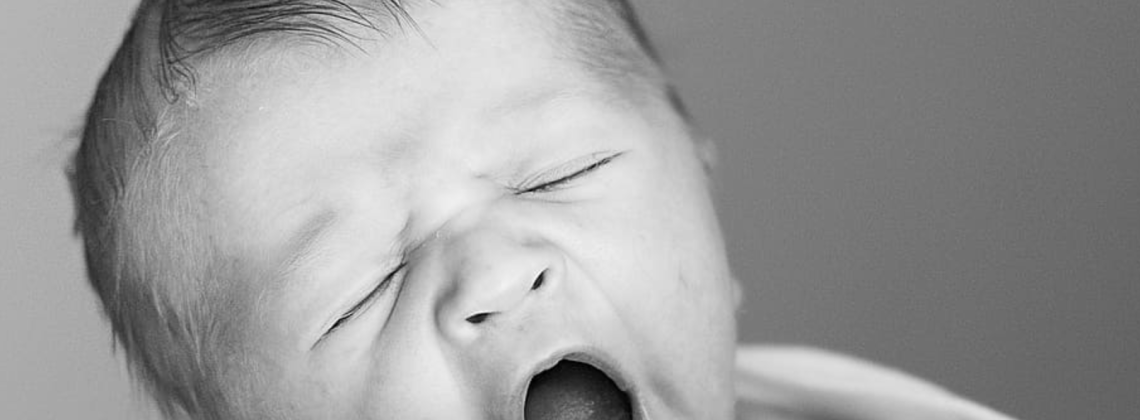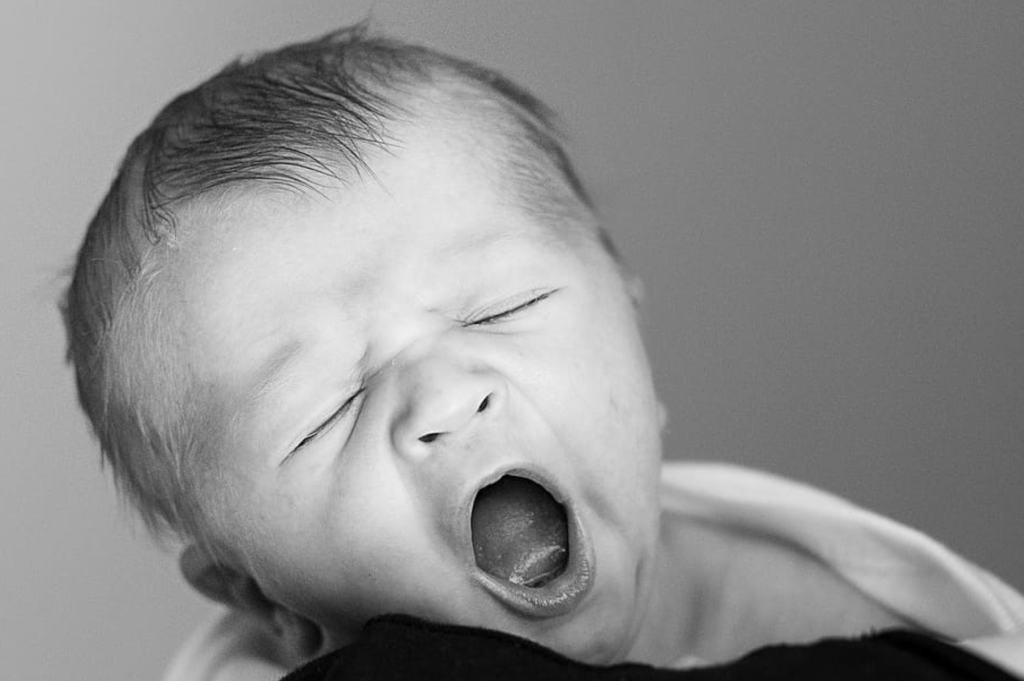

What if natality—rather than mortality—had the last word?
Natality: Toward a Philosophy of Birth by Jennifer Banks. W. W. Norton, 2023. 272 pp., $27.95
Human beings are generative by nature. We create and we were created. Jennifer Banks wrestles with the relative importance of this reality in her thought-provoking new study of how seven thinkers lived and thought about birth and “natality.”
What is “natality?” Banks spends large portions of her introduction and first chapter carefully describing this challenging idea. Natality, as envisioned by philosopher Hannah Arendt, is an alternative conceptual category to mortality. As powerful as death may be, we might choose to view our lives and natures as primarily defined not by our inevitable deaths but rather by our births and our resulting ability to cause more births and rebirths, both literal and figurative.
How would it change philosophy if we were to think of ourselves as first and foremost characterized by life rather than by mortality? How might it change our societal, political, and personal choices—indeed, how might it change our everyday lives?
Banks first became fascinated with Arendt’s ideas on natality as a new mother. Although she read the works and biographies of many thinkers while studying the concept, the seven she chose to profile are Arendt, Friedrich Nietzsche, Mary Wollstonecraft, Wollstonecraft’s daughter Mary Shelley, Sojourner Truth, Adrienne Rich, and Toni Morrison. Banks skillfully and sympathetically chronicles in separate chapters the life and work of each thinker as they relate to birth—both literal and figurative. The book thus explores how birth remained central to the thinking of each despite the complexity and suffering required in life, and birth itself.
Banks identifies the many contradictions of birth and posits that these “[expose] the ambiguities of our being.” Most mothers will recognize how well these paradoxes apply to actual childbirth. Her thoughtful analysis also points to the ways social or political reinventions or personal commitments to authentic living can function under the same birth-like contradictions. They carry with them both suffering and a forward momentum. We humans are built to rise up and create anew, it seems, even out of the ashes of something as terrible as enslavement, genocide, or war.
Many sections of this book are so human, so humane, and so lovely. I found myself repeatedly inspired. In fact, I was captured by the book from the very beginning. Upon opening it, I immediately asked myself which defines me more: death or birth? Was it my mother’s unexpected death when I was a child, or was it giving birth to my four children? Although my early loss colors most aspects of my life, just as Mary Shelley’s loss of her mother colored hers, the births of my children are by far the most defining facts of my life, equaled only by my own creation by a loving God. For me, giving literal birth has been a crucifixion followed by the most astounding and incontrovertible resurrection, even as my fuller experience of pregnancy and motherhood has been full of paradox and contradiction. Birth is by its nature fruitful, and life conquers all—even the hurt and the mess.
So, on the one hand, I intuitively and philosophically agree with the book’s overall argument. We are somehow committed to (re)generation by the mere fact of our having been born.
On the other hand, I experienced some frustrations as I read. In particular, subjective presumptions about society and humankind seem to have affected Banks’ selection and analysis of thinkers to a degree that I think weakens her conclusions. Banks sees her seven figures as “an odd, contradictory cadre,” and in many ways they are indeed quite different. But they are also united by one tremendously important characteristic that is not noted: All seven are exceptional, even radical people. In this way, they are both like each other and dramatically different from everyone else.
Banks argues that the main link between these thinkers is that all remain deeply committed to birth despite its paradoxical and challenging nature. This, Banks suggests, should surprise us; it demonstrates that natality is a crucial part of human nature. Yet in telling us that even these exceptional individuals cling to birth, Banks prompts a question: Is such a very unusual group of people the best place to begin a philosophy of birth, pace the claim that theirs is merely one “version” of natality?
Another concern arises from the assertions Banks makes in her introduction about who cares about natality today and who does not. After asserting explicitly that pro-life groups (and, potentially, the wider political right) only care about life if it belongs to a fetus, Banks goes on to claim that life-supporting “intuitions . . . [and] a strong and unwavering commitment to birth and to life” are “often best expressed” by those who “fight for reproductive justice.” She then chooses to highlight such individuals. In doing so, she dismisses out of hand many other thinkers who thought much about her subject but whose wider political and social approaches she believes to be “deleterious to life.”
There is a related point to be made about Banks’ treatment of religious belief in considering her subjects’ approaches to natality. I was struck when reading by how well-known some of these truths about birth have been for millennia. In particular, Christians have held the power of birth and rebirth to overcome death as one of the central truths of their faith, a tenet that underlies the historical Christian condemnation of abortion and infanticide (as well as birth control).
The commitment to birth among Christians is deep and broad, although it has become less so in some quarters since the early twentieth century. Banks acknowledges Christianity’s focus on death but rarely refers to its emphasis on life, perhaps because it has not historically supported “reproductive justice.” Had Banks looked at less radical figures, I suspect she would have found a firm commitment to birth, along with memento mori, in the lives of even the most ordinary Europeans and Americans, not just because of their lack of access to birth control but because of their religious beliefs.
Some of the books’ subjects, such as Arendt, were cultural members of a faith group but not practicing believers. Nietzsche was born a pastor’s son but later famously declared that “God is dead.” Others were active believers, notably Toni Morrison, who converted to Catholicism at age twelve (taking the name Anthony, hence “Toni”). Banks notes Morrison’s beliefs but ties them to African American culture’s attachment to magic and to rebirth in conversion, and more or less stops her interpretation there. Banks also draws the conclusion from Morrison’s novel Beloved that Morrison likely supported abortion, which is against Catholic teaching. This may well be so, as it is for countless Catholics. I have no idea; as Banks notes, Morrison did not write on the subject.
Yet she claims Morrison’s support for abortion through her reading of her protagonist’s conflicted murder of her child without considering how Morrison’s faith might have affected her views on abortion despite its prominence in Catholic teaching and public practice. Nor does Banks consider religious belief when describing Morrison’s views on teenage pregnancy or her personal child-rearing choices. This is an oversight when examining a Catholic who was attached enough to her faith to adopt her confirmation name as her primary moniker.
But these criticisms do not diminish the high value of this book. I love much about Natality. I stand in awe of Banks’ accomplishments in grappling in a unifying way with such deep and passionate thinkers. Her book succeeds in raising the question of natality so that we might move, as the subtitle indicates, a few steps farther “toward a philosophy of birth.” The book is an ambitious project and a worthwhile read. I felt I really “met” each of the seven thinkers through Banks’ words and am now excited to investigate the works of several more deeply.
Our society has much to bring into the light regarding literal birth and parenthood, especially motherhood. So much of the experience of childbirth and motherhood is indeed hidden under the shadow of our pursuit of pleasure, our avoidance of death, and our fear of allowing others to speak their pain and inner conflicts. Ambivalence, dualisms, paradoxes, and conflicts are not welcome in our public discourse beyond the mommy blogs, as Valerie Stivers has recently noted. The truth about birth and parenthood is taboo because we fear its death-like properties and underestimate its essential life-giving nature. Banks points us towards a philosophy that emphasizes life, and in a public fashion. This is worth thinking about more deeply.
Dixie Dillon Lane is an American historian, teacher, and essayist who writes frequently for Hearth & Field and Front Porch Republic as well as other publications, including her website, TheHollow.Substack.com. She holds a Ph.D. from the University of Notre Dame.